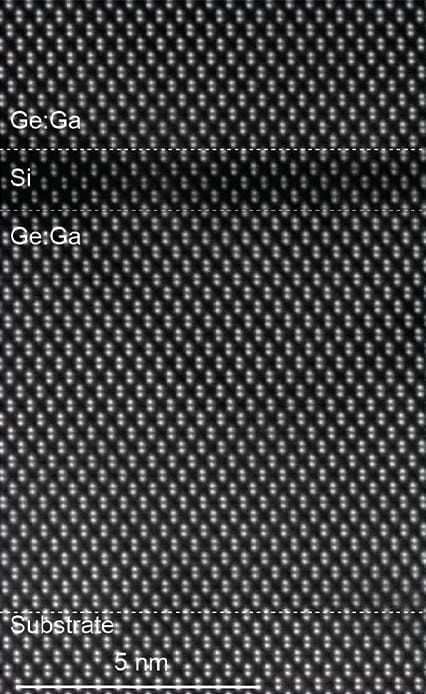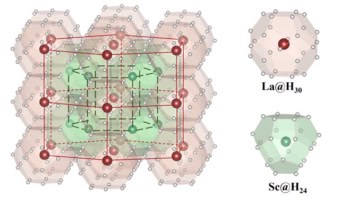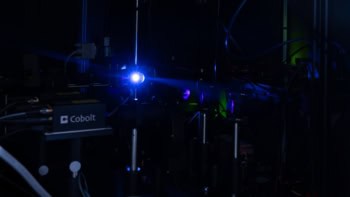
The ability to induce superconductivity in materials that are inherently semiconducting has been a longstanding research goal. Improving the conductivity of semiconductor materials could help develop quantum technologies with a high speed and energy efficiency, including superconducting quantum bits (qubits) and cryogenic CMOS control circuitry. However, this task has proved challenging in traditional semiconductors – such as silicon or germanium – as it is difficult to maintain the optimal superconductive atomic structure.
In a new study, published in Nature Nanotechnology, researchers have used molecular beam epitaxy (MBE) to grow gallium-hyperdoped germanium films that retain their superconductivity. When asked about the motivation for this latest work, Peter Jacobson from the University of Queensland tells Physics World about his collaboration with Javad Shabani from New York University.
“I had been working on superconducting circuits when I met Javad and discovered the new materials their team was making,” he explains. “We are all trying to understand how to control materials and tune interfaces in ways that could improve quantum devices.”
Germanium: from semiconductor to superconductor
Germanium is a group IV element, so its properties bridge those of both metals and insulators. Superconductivity can be induced in germanium by manipulating its atomic structure to introduce more electrons into the atomic lattice. These extra electrons interact with the germanium lattice to create electron pairs that move without resistance, or in other words, they become superconducting.
Hyperdoping germanium (at concentrations well above the solid solubility limit) with gallium induces a superconducting state. However, this material is traditionally unstable due to the presence of structural defects, dopant clustering and poor thickness control. There have also been many questions raised as to whether these materials are intrinsically superconducting, or whether it is actually gallium clusters and unintended phases that are solely responsible for the superconductivity of gallium-doped germanium.
Considering these issues and looking for a potential new approach, Jacobson notes that X-ray absorption measurements at the Australian Synchrotron were “the first real sign” that Shabani’s team had grown something special. “The gallium signal was exceptionally clean, and early modelling showed that the data lined up almost perfectly with a purely substitutional picture,” he explains. “That was a genuine surprise. Once we confirmed and extended those results, it became clear that we could probe the mechanism of superconductivity in these films without the usual complications from disorder or spurious phases.”
Epitaxial growth improves superconductivity control
In a new approach, Jacobson, Shabani and colleagues used MBE to grow the crystals instead of relying on ion implantation techniques, allowing the germanium to by hyperdoped with gallium. Using MBE forces the gallium atoms to replace germanium atoms within the crystal lattice at levels much higher than previously seen. The process also provided better control over parasitic heating during film growth, allowing the researchers to achieve the structural precision required to understand and control the superconductivity of these germanium:gallium (Ge:Ga) materials, which were found to become superconducting at 3.5 K with a carrier concentration of 4.15 × 1021 holes/cm3. The critical gallium dopant threshold to achieve this was 17.9%.
Using synchrotron-based X-ray absorption, the team found that the gallium dopants were substitutionally incorporated into the germanium lattice and induced a tetragonal distortion to the unit cell. Density functional theory calculations showed that this causes a shift in the Fermi level into the valence band and flattens electronic bands. This suggests that the structural order of gallium in the germanium lattice creates a narrow band that facilitates superconductivity in germanium, and that this superconductivity arises intrinsically in the germanium, rather than being governed by defects and gallium clusters.

Evidence for a superconducting gap emerges in hydrogen sulphides
The researchers tested trilayer heterostructures – Ge:Ga/Si/Ge:Ga and Ge:Ga/Ge/Ge:Ga – as proof-of-principle designs for vertical Josephson junction device architectures. In the future, they hope to develop these into fully fledged Josephson junction devices.
Commenting on the team’s future plans for this research, Jacobson concludes: “I’m very keen to examine this material with low-temperature scanning tunnelling microscopy (STM) to directly measure the superconducting gap, because STM adds atomic-scale insights that complement our other measurements and will help clarify what sets hyperdoped germanium apart”.



